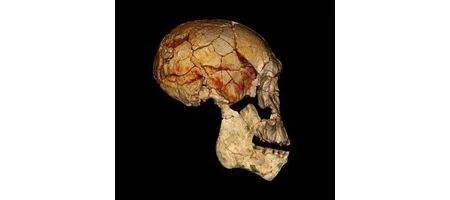A third human species lived alongside Homo erectus and Homo habilis in East Africa as long as two million years ago.

New fossils discovered east of Lake Turkana include a face, a near-complete lower jaw and part of a second lower jaw, and appear to confirm the tentative discovery of a new species some 40 years ago.
In 1972, scientists discovered the fossil known as KNM-ER 1470 – 1470 for short – leading to a debate about just how many different species of early Homo lived during the Pleistocene epoch.
Some said the skull’s large brain size and long flat face was down to sexual differences and natural variation within a single species, whereas others believed it was a separate species.
An answer’s been a long time coming, as 1470’s remains don’t include its teeth or lower jaw, and no other fossil skull has shown 1470’s flat and long face.
“For the past 40 years we have looked long and hard in the vast expanse of sediments around Lake Turkana for fossils that confirm the unique features of 1470’s face and show us what its teeth and lower jaw would have looked like,” says Meave Leakey, co-leader of the Koobi Fora Research Project (KFRP). “At last we have some answers.”
But the three new fossils, uncovered between 2007 and 2009, give a much clearer picture of what 1470 looked like. All found within about seven miles of 1470’s location, they are dated between 1.78 million and 1.95 million years old.
The face KNM-ER 62000 is very similar to that of 1470, showing that 1470 isn’t an ‘odd one out’ – and its well-preserved upper jaw has almost all of its cheek teeth still in place. This means it’s possible for the first time to infer the type of lower jaw that would have fitted 1470.
And a particularly good match can be found in the other two new fossils, the lower jaw KNM-ER 60000, found in 2009, and part of another lower jaw, KNM-ER 62003, found in 2007. KNM-ER 60000 is the most complete lower jaw of an early member of the genus Homo yet discovered, says the team.
“As a result, it is now clear that two species of early Homo lived alongside Homo erectus,” says Fred Spoor, leader of the scientific analyses. “The new fossils will greatly help in unraveling how our branch of human evolution first emerged and flourished almost two million years ago.”






